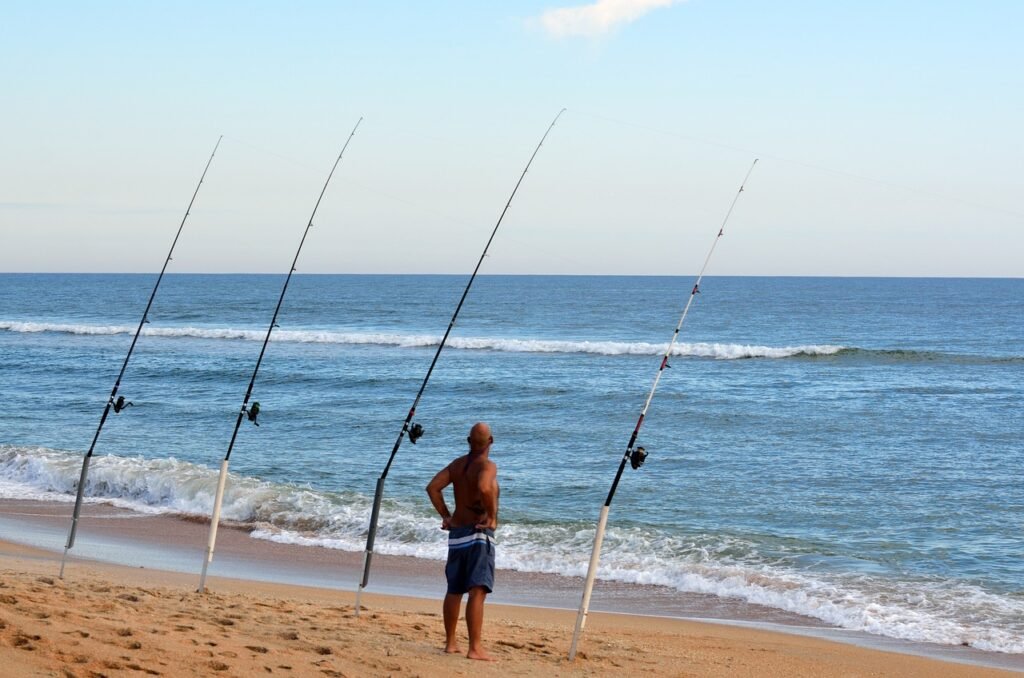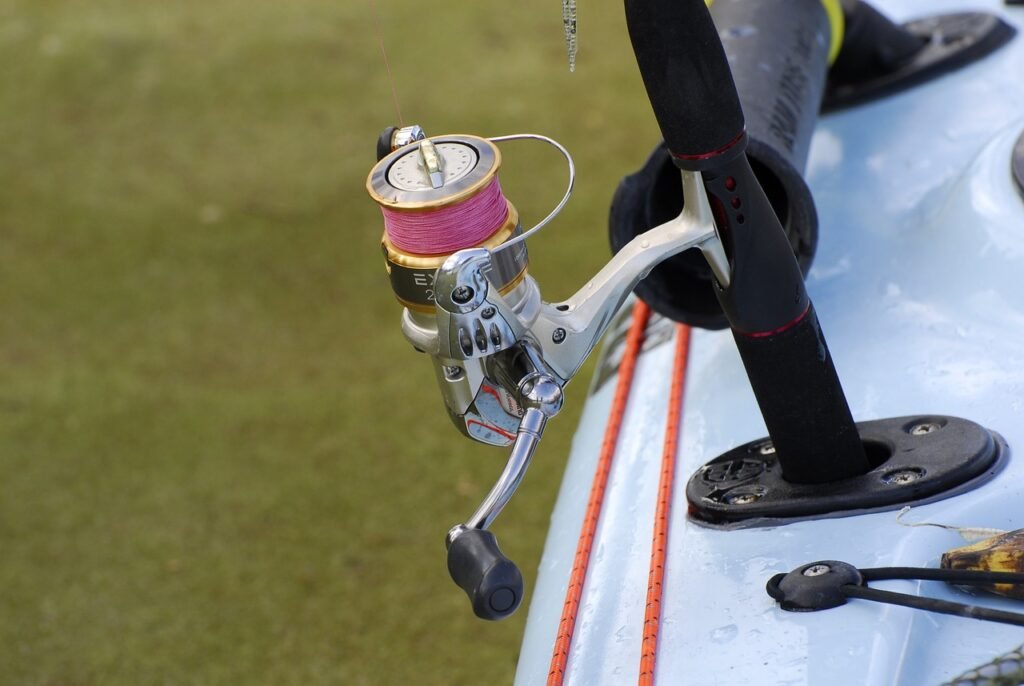The Beauty and Importance of Saltwater Fishing
Saltwater fishing is a way to connect with nature, understand marine ecosystems, and appreciate the beauty of our oceans. Whether you’re casting lines off the coast or venturing into deeper waters, saltwater fishing offers unique experiences that can be as thrilling as they are serene.
For eco-conscious anglers, marine biologists, and sustainability advocates, understanding the different methods of saltwater fishing is crucial. Not only does it enhance the fishing experience, but it also promotes practices that protect our marine life and habitats. Today, we’ll dive into two primary methods of saltwater fishing: offshore and inshore. By the end, you’ll know the differences, the environmental impacts, and the importance of sustainable fishing.
Overview of Offshore and Inshore Fishing Methods
Before we delve deeper, let’s briefly outline what sets offshore and inshore fishing apart:
Offshore Fishing:
- Conducted far from the shore, typically in waters deeper than 30 meters (100 feet), offshore fishing is an adventurous activity that often requires the use of sophisticated navigation and fish-finding equipment.
- This form of fishing often involves larger boats capable of handling rough seas and covering longer travel distances, sometimes heading dozens or even hundreds of miles away from the coastline.
- Target species include larger, migratory fish like tuna, marlin, and swordfish, which are known for their impressive size and strength, providing a thrilling challenge for anglers.
Inshore Fishing:
- Takes place closer to the shore, usually in waters less than 30 meters (100 feet) deep, making it more accessible and often more suitable for casual anglers or those with less experience.
- Inshore fishing can be done from smaller boats, kayaks, or even directly from the shoreline, offering a range of options depending on one’s preference and available resources.
- Target species often include smaller, more localized fish like redfish, snook, and trout, which are abundant in coastal waters and provide a diverse and enjoyable fishing experience.
Now, let’s explore these methods in more detail, delving into the specific techniques, equipment, and strategies that make each type of fishing unique and rewarding.
In-Depth Comparison of Offshore and Inshore Fishing Techniques
Location
Offshore Fishing:
Venturing offshore means heading into deeper waters, far away from the coastline. This requires a significant amount of travel time, often several hours, to reach prime fishing spots. Popular offshore locations include deep-sea trenches, underwater canyons, and the open ocean. These environments are home to larger, more challenging species such as marlin, tuna, and swordfish, making offshore fishing an exhilarating experience for seasoned anglers. The preparation for offshore trips often includes advanced navigational planning, ensuring the boat is well-equipped for the long journey.
Inshore Fishing:
Inshore fishing is typically done within a few miles of the coastline, in shallower waters. These areas are easier to access, making them ideal for a day trip. Common inshore locations include bays, estuaries, and coastal flats. Inshore fishing is perfect for beginners or those looking for a more relaxed fishing experience. Anglers often target species like redfish, flounder, and sea trout. The proximity to shore allows for shorter trips and the opportunity to enjoy the coastal scenery, making it a popular choice for family outings.
Equipment
Offshore Fishing:
The equipment used in offshore fishing is specialized to handle the challenges of deep-sea environments and larger fish. This includes:
- Heavy-duty rods and reels capable of withstanding the immense power and weight of large fish like marlins, tunas, and sharks.
- Advanced electronics such as sonar and GPS for precise navigation and locating fish, often essential in vast, open waters where fish can be widely dispersed.
- Larger boats equipped with powerful engines to cover greater distances, safety gear including life vests and emergency beacons, and ample storage for long trips, including live wells for bait and catches, as well as provisions for extended stays at sea.
Inshore Fishing:
Inshore fishing gear is generally lighter and more versatile, suited for catching smaller fish in calmer, coastal waters. Key equipment includes:
- Lightweight rods and spinning reels designed for species such as redfish, speckled trout, and flounder, which are commonly found in bays, estuaries, and nearshore waters.
- Simpler electronics, if any, as visual cues, local knowledge, and experience play a significant role in locating fish. Anglers often rely on observing birds, tides, and water movement to find fish.
- Smaller boats, kayaks, or even waders for shore-based fishing, allowing easy access to shallow waters, docks, piers, and other structures where fish are likely to congregate. These vessels and gear make it easier to maneuver in tight spaces and offer a more intimate fishing experience close to shore.
Target Species
Offshore Fishing:
Offshore fishing targets bigger, migratory species that roam the vast open ocean miles from the shore. These fish often require specialized equipment and techniques due to their size and power. Some popular targets include:
- Tuna: Known for their incredible speed and strength, tuna are a prized catch for their delicious taste and challenging fight.
- Marlin: Famous for their spectacular aerial displays, marlin are often seen leaping out of the water during the fight, making them a thrilling catch.
- Swordfish: Recognizable by their long, flat bills, swordfish are nocturnal hunters, often caught at great depths, providing anglers with a unique deep-sea fishing experience.
Inshore Fishing:
Inshore fishing focuses on smaller, often more abundant species found in shallower waters near the coast, such as bays, estuaries, and mangroves. This type of fishing is typically more accessible to casual anglers and can be enjoyed from boats, piers, or even from the shore. Common targets include:
- Redfish: A favorite among anglers for their fighting spirit and willingness to take a variety of baits, redfish are often found in shallow waters and around structures like oyster beds.
- Snook: Known for their aggressive strikes and acrobatics, snook are a highly sought-after game fish found in warm coastal waters, often near mangroves and estuaries.
- Trout: Valued for their taste and accessibility, trout are commonly found in both saltwater and freshwater environments. Their willingness to bite makes them an excellent target for both novice and experienced anglers alike.
Environmental Impact and Sustainable Fishing Practices
As fishing enthusiasts, it’s our responsibility to understand the environmental impacts of our activities and adopt sustainable practices to protect our oceans for future generations.
Offshore Fishing Impacts
Offshore fishing can impact marine ecosystems in several ways:
- Bycatch: The unintentional capture of non-target species, which can include endangered species, juvenile fish, and other marine life. This can disrupt the ecological balance and reduce biodiversity.
- Overfishing: Depleting fish populations faster than they can reproduce, leading to the collapse of fish stocks. This not only affects the target species but also predators and prey within the ecosystem.
- Habitat Disturbance: Damage to deep-sea habitats from fishing gear such as trawls and longlines. These methods can destroy coral reefs, sponge beds, and other critical habitats that provide shelter and breeding grounds for various marine species.
Inshore Fishing Impacts
Inshore fishing also poses environmental risks:
- Habitat Degradation: Destruction of sensitive coastal habitats like mangroves and seagrass beds, which are crucial for the health of marine life. These areas serve as nurseries for juvenile fish and protect coastlines from erosion.
- Pollution: Runoff from boats and shore activities can pollute water bodies with oil, fuel, trash, and other contaminants. This pollution can harm marine organisms and degrade water quality, affecting both human and wildlife health.
- Overfishing: Similar to offshore, inshore fishing can lead to population declines if not managed properly. Local fish populations can be quickly depleted, affecting the livelihoods of communities that rely on these resources and disrupting local ecosystems.
By adopting sustainable fishing practices, such as using selective gear, adhering to catch limits, and protecting habitat areas, we can help mitigate these impacts and ensure the health and abundance of marine life for years to come.
Sustainable Practices for Both Methods
Adopting sustainable fishing practices can help mitigate these impacts:
- Catch and Release: Practicing catch and release helps maintain fish populations. Handle fish carefully to increase their chances of survival.
- Fishing Limits: Adhering to size and bag limits ensures fish populations stay healthy.
- Eco-Friendly Gear: Using non-toxic, biodegradable gear minimizes pollution.
- Respecting Habitats: Avoiding sensitive areas and minimizing habitat disruption.
Personal Stories: Illustrating the Differences and Benefits of Each Method
Allow me to share a couple of personal stories that highlight the unique experiences of offshore and inshore fishing.
Offshore Adventure
One summer, I joined a group of friends on an offshore fishing trip. The journey began before dawn, as we set out on a well-equipped boat, navigating through choppy waves towards the deep blue horizon. Hours passed, and anticipation grew as we reached our destination—a renowned tuna hotspot.
The thrill of hooking a massive yellowfin tuna is something I’ll never forget. The battle was intense, requiring strength, patience, and teamwork. After what felt like an eternity, we successfully reeled in the magnificent fish. It was a testament to the power and beauty of offshore fishing, but also a reminder of the importance of sustainable practices to ensure these creatures thrive for generations to come.
Inshore Serenity
Contrast this with a serene morning spent inshore fishing from my kayak. Gliding silently through the calm waters of a coastal estuary, I was surrounded by the sounds of nature. The target that day was redfish, known for their feisty attitudes despite their smaller size.
Casting my line near a patch of seagrass, I felt a sudden tug. The fight was exhilarating but different from the offshore battle. It was more about finesse than brute strength. Releasing the redfish back into its habitat, I felt a profound connection to the environment and a sense of responsibility to protect it.
A Balanced Approach for a Sustainable Marine Ecosystem
Understanding the differences between offshore and inshore fishing is not just about enhancing your fishing experience—it’s about fostering a balanced, sustainable marine ecosystem. Both methods offer unique thrills and challenges, but they also come with environmental responsibilities. By practicing sustainable fishing, we can ensure that future generations can enjoy the beauty and bounty of our oceans. Whether you prefer the deep-sea adventure of offshore fishing or the tranquil experience of inshore fishing, remember that every action we take on the water has an impact.



